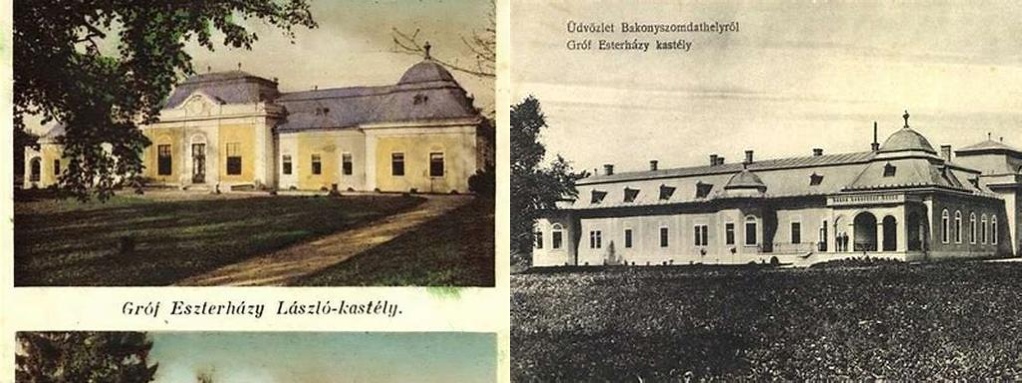
Bakonyszombathely is nestled quietly among the undulating green ridges of the Bakony Mountains, a place so peaceful that you’ll likely hear birdsong before the sound of cars. There, somewhat tucked away from the grand tourist highways, stands the Esterházy-kastély, a palace with an atmosphere far more intimate than the world-famous baroque piles that bear the illustrious Esterházy name elsewhere in Hungary. Yet what Bakonyszombathely’s palace may lack in imposing scale, it more than makes up in layered stories, the comforting echo of creaking floors, and the sense of being part of a living tapestry threaded by centuries of changing hands and shifting tastes.
Long ago, in the second half of the 18th century, a member of the mighty Esterházy family resolved to remodel what had begun as a modest manor into a mannered country residence that would suit evolving expectations of elegance and modernity. The world was changing, after all; Hungary was no longer a wild borderland but an emerging player in the Habsburg empire’s glittering mosaic. This wave of refinement was largely guided by Miklós Esterházy, whose vision for his estates blended comfort and civility with the solid respectability demanded by noble blood. The result is the Bakonyszombathely palace we see today: a one-story Baroque structure, striking in its white-stucco façade and beloved for the beauty of its layout. Grand as it once aspired to be, it keeps a cozy, approachable air that immediately makes the visitor feel at home—no need for court attire or bows.
Stepping beneath the arched portico is like slipping into an old family photograph. A light, dappled glow from sash windows falls on wooden floors that, more than anything, recall the house’s central role as a familial retreat rather than a parade ground for formal entertainments. In its prime, the palace was flanked by outbuildings, stables, and an expansive English-style park. Some of the park’s oldest trees still watch silently over the grounds, planted nearly 250 years ago to offer shade to generations of strolling guests. Walk the perimeter and you’ll notice the simple but elegant orchestration of the garden: winding paths framed by chestnuts, ancient oaks, and—come spring—apricot blossoms folding the air with perfume.
The Esterházy family’s fortunes waxed and waned with the political turbulence that defined Central Europe. By the time the 19th century rolled around, the Bakonyszombathely palace had already danced through numerous chapters, serving as a summer haven, a dignified administrative hub, and, after the Second World War, falling briefly into less dignified use when it was nationalized and subdivided. Some of its original baroque detailing was lost during these interruptions, but the structure endured. Its walls absorbed laughter and heartbreak—the estate became the stage where multiple generations enacted the smaller dramas of daily life, far from the headlines.
If you’re the kind of traveler hungry for authenticity, the Esterházy-kastély is where you can trace fingerprints across the centuries, not just read about them. In recent decades, gentle but determined efforts began to restore and protect the palace, respecting its patchworked past rather than erasing it. Today, it stands in understated contrast to places like Fertőd or Vienna’s palaces—here, rooms still echo with historic character, yet are not roped off behind red velvet. Guided tours, often conducted by local historians and residents with a bone-deep fondness for the site, meander not only through the building but through anecdotes: the story of the heir who preferred horse-racing to diplomacy, or the cook who smuggled news of revolution folded in napkins. Visitors find themselves unexpectedly engaged, not just observing history but in conversation with it.
Surrounding the palace, the village of Bakonyszombathely coaxes visitors to slow down. Local shops might tempt you with honey, homemade jams, or freshly baked bread, and every corner offers the kind of countryside calm that can only embolden curiosity. You could bring a book, or simply sit on one of the benches beneath a centuries-old lime tree and rhythmically fall into the beat of rural time.
The Esterházy-kastély at Bakonyszombathely embodies a particular kind of Hungarian charm—the personal, the lived-in, the storied. It’s not a monument to past glories frozen in place, but a touchstone for those willing to wander off the main roads. Here, stories breathe, and the walls remember. Whether you’re a scholar of architecture, a lover of landscape, or simply someone who enjoys the quiet resonance of history, the palace invites you to linger a little longer and, if only for a moment, call this patch of Bakony home.





